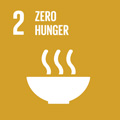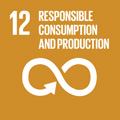- Docente: Andrea Segrè
- Credits: 6
- SSD: AGR/01
- Language: Italian
- Teaching Mode: In-person learning (entirely or partially)
- Campus: Bologna
- Corso: First cycle degree programme (L) in Marketing and Economics of the agro-industrial system (cod. 8526)
Learning outcomes
At the end of the course the student knows the most suitable tools to understand and analyse agricultural policy at a community and international level. He knows the essential aspects of the agri-food system such as the problems of food security, food markets, natural environment, in a framework of circular socio-economic development.
Course contents
Unit 1 Agricultural policy: Definition of agricultural policy and its evolution in history. At the end of the first unit the student knows the meaning of public policy, the motivations of public intervention in agriculture and the objectives and tools that characterize it.
- Main characteristics of agricultural systems in the world and in Italy.
- The contribution of agriculture to economic development.
- Public intervention in agriculture: motivations, objectives and tools.
- Agenda2030: agricultural and food policy within the framework of Agenda2030
Unit 2 Food and sustainability: At the end of the second unit the student understands the link between agriculture and food, knows the definition and the underlying causes of food security and food waste, and identifies the main lines of intervention implemented at national and international level.
- Agriculture and food: sustainability in agricultural and
- Food security, definition of causes and intervention strategies.
- Food waste, definition of causes and intervention strategies.
- Food consumption and lifestyles.
Unit 3 Circular economy, strategies, agricultural policy: At the end of the third unit the student acquired knowledge about the concept of circular economy, bioeconomy and strategies for its implementation. He is able to define the role of agriculture within the bioeconomy framework.
- The role of resources in the global economy.
- Efficient use of resources as a political priority. From the Brundtland Report to the Green Economy.
- Circular economy in European policies.
- Bioeconomy: definition, concepts, applications.
Unit 4: Food-energy-water-soil Nexus: At the end of the fourth unit the student is able to recognize the link between food, energy, water and soil and to illustrate the relationships through examples and concrete cases.
- The Nexus between resources.
- Renewable energy in agriculture.
- Water, agriculture and land use.
- Land grabbing: economic opportunity or risk for agricultural development.
- Wasting food, wasting resources
Unit 5: International and comparative: At the end of the fifth unit the student has an overview of the main actors involved in managing agricultural development and agricultural policy at the international level.
- The agricultural policy in the United States: the Farm Bill
- FAO, WFP, IFAD: The food specialized agencies of the United States
- OECD: the role of the Organization for Economic Cooperation and Development for the agricultural sector and rural development.
- Non-governmental organizations, agriculture and development cooperation.
Unit 6: Innovation, sustainability and challenges for the agriculture of the future: Through a series of dedicated seminars the student understands some of the main challenges’ agriculture will face in the future. Individual lessons on specific topics held by internal or external experts.
- Agriculture and climate change.
- The role of migration for agricultural and rural areas.
- Plastics, bioplastics, packaging
- Evaluate sustainability assessment through life cycle analysis
- Seminars change every year depending on students’ interest and needs.
Unit 8. Practical application and seminars (24 hours)
- The European projects
- Financing lines
- Structuring a project idea
- Drafting and discussion of a project idea
- Seminars
Readings/Bibliography
Segrè Andrea, Politiche per lo sviluppo agricolo e la sicurezza alimentare, Carocci editore, Roma, 2008.
Additional articles, reports and other sources will be available on the course website (https://iol.unibo.it/).
Teaching methods
Front loaded and active learning methodologies; group and individual exercises; seminars.
Assessment methods
The exam will take place in two ways. The first involves the preparation of individual and group paper, that will be made during the course. The second involves an oral examination (lasting about 20-25 minutes) to assess the expected learning. In particular, the questions of the oral examination, cover topics developed in the teaching units.
Teaching tools
Blakckboard, projector, PC, ppt presentations, internet access.
Office hours
See the website of Andrea Segrè
SDGs




This teaching activity contributes to the achievement of the Sustainable Development Goals of the UN 2030 Agenda.
